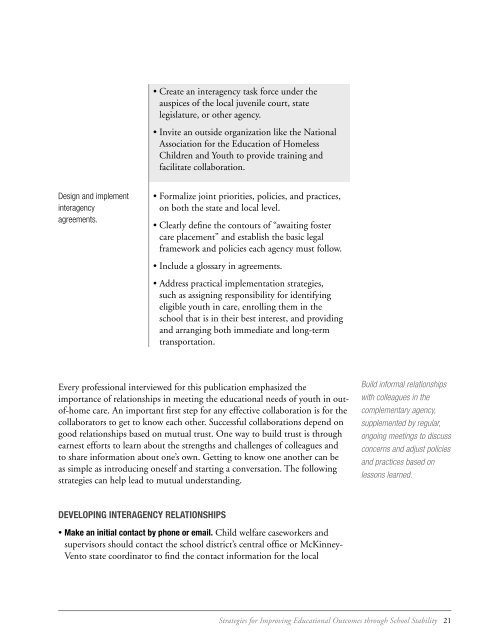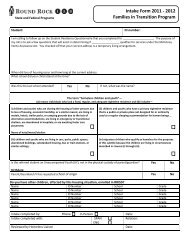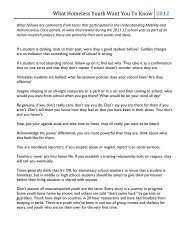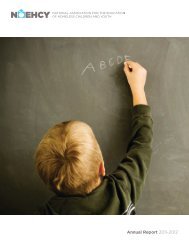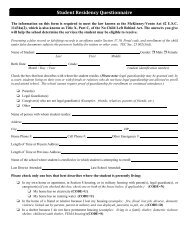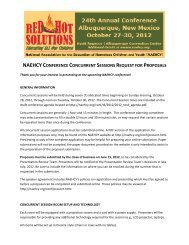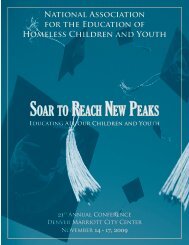The McKinney-Vento Act and Children and Youth ... - State of Michigan
The McKinney-Vento Act and Children and Youth ... - State of Michigan
The McKinney-Vento Act and Children and Youth ... - State of Michigan
Create successful ePaper yourself
Turn your PDF publications into a flip-book with our unique Google optimized e-Paper software.
• Create an interagency task force under the<br />
auspices <strong>of</strong> the local juvenile court, state<br />
legislature, or other agency.<br />
• Invite an outside organization like the National<br />
Association for the Education <strong>of</strong> Homeless<br />
<strong>Children</strong> <strong>and</strong> <strong>Youth</strong> to provide training <strong>and</strong><br />
facilitate collaboration.<br />
Design <strong>and</strong> implement<br />
interagency<br />
agreements.<br />
• Formalize joint priorities, policies, <strong>and</strong> practices,<br />
on both the state <strong>and</strong> local level.<br />
• Clearly define the contours <strong>of</strong> “awaiting foster<br />
care placement” <strong>and</strong> establish the basic legal<br />
framework <strong>and</strong> policies each agency must follow.<br />
• Include a glossary in agreements.<br />
• Address practical implementation strategies,<br />
such as assigning responsibility for identifying<br />
eligible youth in care, enrolling them in the<br />
school that is in their best interest, <strong>and</strong> providing<br />
<strong>and</strong> arranging both immediate <strong>and</strong> long-term<br />
transportation.<br />
Every pr<strong>of</strong>essional interviewed for this publication emphasized the<br />
importance <strong>of</strong> relationships in meeting the educational needs <strong>of</strong> youth in out<strong>of</strong>-home<br />
care. An important first step for any effective collaboration is for the<br />
collaborators to get to know each other. Successful collaborations depend on<br />
good relationships based on mutual trust. One way to build trust is through<br />
earnest efforts to learn about the strengths <strong>and</strong> challenges <strong>of</strong> colleagues <strong>and</strong><br />
to share information about one’s own. Getting to know one another can be<br />
as simple as introducing oneself <strong>and</strong> starting a conversation. <strong>The</strong> following<br />
strategies can help lead to mutual underst<strong>and</strong>ing.<br />
Build informal relationships<br />
with colleagues in the<br />
complementary agency,<br />
supplemented by regular,<br />
ongoing meetings to discuss<br />
concerns <strong>and</strong> adjust policies<br />
<strong>and</strong> practices based on<br />
lessons learned.<br />
DEVELOPING INTERAGENCY RELATIONSHIPS<br />
• Make an initial contact by phone or email. Child welfare caseworkers <strong>and</strong><br />
supervisors should contact the school district’s central <strong>of</strong>fice or <strong>McKinney</strong>-<br />
<strong>Vento</strong> state coordinator to find the contact information for the local<br />
Strategies for Improving Educational Outcomes through School Stability 21


